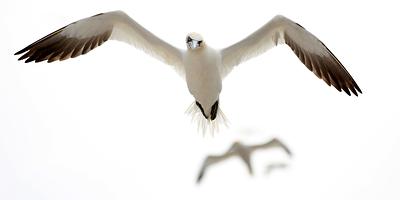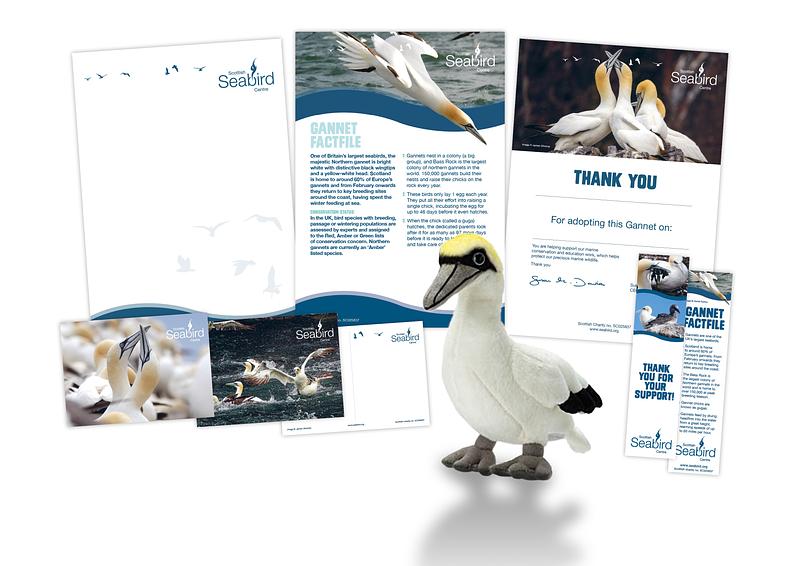
Gannet
Morus bassanus (Northern gannet)
What do they look like?
One of Britain’s largest seabirds, the Northern gannet is bright white with distinctive black wingtips and a yellow head. When flying, they alternate between flapping and gliding, swooping low over the water. They feed by circling high above the waves, before folding their wings back and diving into the water headfirst at speeds of up to 60 miles per hour.
Young gannets are dark brown in colour at a year old and, over 3-5 years, will gradually moult this dark plumage and switch it for white as they develop into mature adults.
_(c)_Emma_Marriott.png)
When can I see them in Scotland?
February – October
Where can I see them in Scotland?
Scotland is home to around 60% of Europe’s gannets and from February onwards they return to key breeding sites around the coast, including the Bass Rock which is the world's largest colony of Northern gannets. These seabirds favour coastal cliffs and remote islands, with large breeding colonies established around Troup Head, St Kilda and in the Northern Isles.
Find out more in our blog: Where to See Gannets in Scotland
Conservation Status:
In the UK, bird species with breeding, passage or wintering populations are assessed by experts and assigned to the Red, Amber or Green lists of conservation concern. Northern gannets are currently an ‘AMBER’ listed species.

_Paul_Hackett.JPG)
